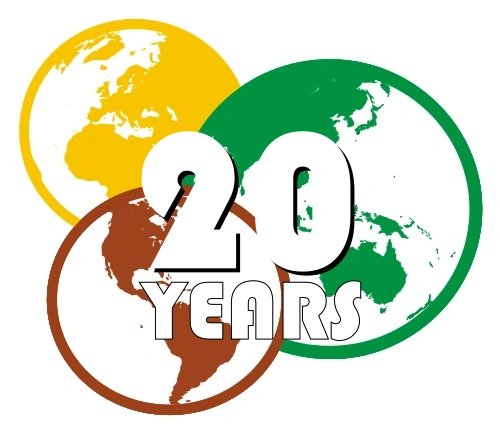| |||||
| Anthem | "Ja, vi elsker dette landet" | ||||
| Capital (and largest city) |
Oslo | ||||
| Other cities | Bergen, Trondheim | ||||
| Language official |
Norwegian | ||||
| others | Sami | ||||
| Religion main |
Church of Norway | ||||
| others | Lutheranism, Roman Catholicism | ||||
| Demonym | Norwegian | ||||
| Government | Constitutional monarchy | ||||
| Internet TLD | .no | ||||
| Organizations | League of Nations | ||||
Norway (Kongeriket Norge) is a nation located in northern Europe. Like its other Nordic neighbors, leftists and socialists consider it a near-utopian society. Norway borders Sweden, Finland, Russia.
History[]
Foundation[]
The Viking Age in Europe started in Norway. The first unified Norwegian kingdom was founded by Harald Hårfagre after the Battle of Hafrsfjord in Stavanger, thus becoming king. Harald's realm was mainly a coastal state in southern Norway, though numerous Norwegians emigrated to Iceland, the Faroe Islands, and even Greenland. Norwegian settlers founded the modern-day Irish cities of Dublin, Limerick and Waterford. In the 10th to 11th century, Norse pagan religion started to become slowly replaced by Christianity. Haakon the Good was Norway's first Christian king, though his attempts to introduce the religion were rejected. Upon the death of Haakon V, King of Norway, in 1319, Magnus Erikson, at just three years old, inherited the throne as King Magnus VII of Norway. A movement to make Magnus king of Sweden was successful. At this time, both Swedish and Danish kings were elected to the throne by their respective nations' nobles. In 1349, the Black Death hit Norway hard, taking out nearly 50-60% of the population. The death rate was equal with most of the rest of Europe, though the plague left Norway much poorer than the rest of Europe. King Magnus VII ruled Norway until 1350, when his son, Haakon, was placed on the throne as Haakon VI. Haakon married the daughter of the king of Denmark. Upon the death of Haakon VI, in 1379, his son, Olaf IV, was only 10 years old. Olaf had already been elected to the throne of Denmark on 3 May 1376. Upon Olaf's accession to the throne of Norway, Denmark and Norway entered a personal union.
Union with Denmark[]

The Kalmar Union at around 1500
Margaret of Denmark was working towards a union of Sweden with Denmark and Norway. On 2 February 1388, Norway crowned Margaret, cementing the union between the two nations. After an all-Scandinavian meeting held at Kalmar, Erik of Pomerania was crowned king of all three Nordic nations. Thus, Sweden, Denmark, and Norway were fused into one nation, the Kalmar Union. After Sweden seceded from the Kalmar Union in 1521, Norway tried to follow suit. However, the rebellion was defeated, and Norway remained in union with Denmark for the next three centuries. This was a period of great prosperity, especially in terms of shipping and trade. The era under Denmark also experienced Norway's revival from the Black Plague. The relationship between Denmark and Norway was very pleasant; rebellion was uncommon and Denmark supported Norway's needs for grain and food supplies, and Norway supplied Denmark with timber, metal, and fish. After Protestantism was introduced in 1536, the the archbishopric in Trondheim was dissolved and Norway lost its independence, becoming simply a Danish colony. In 1661, Norway was restored as a kingdom, though in a legislative union with Denmark. Norway did lose some land to Sweden during the 16th century, though it did win some provinces from Sweden and Russia during that timespan.
Union with Sweden & Modern Norway[]
After Denmark-Norway was attacked by the United Kingdom, it entered an alliance with Napoleon, with the war leading to the mass starvation in 1812. As Denmark found itself on the losing side of the war, it was forced to cede Norway to Sweden. Following the recession caused by the Napoleonic Wars, economic development of Norway remained slow until growth began around 1830. This period also saw the rise of the Norwegian nationalist movement, which hoped to define and express a distinct Norwegian national character. Christian Michelsen, a shipping magnate and statesman, and Prime Minister of Norway from 1905 to 1907, played a central role in the peaceful separation of Norway from Sweden on 7 June 1905. The government offered the throne of Norway to a prince of the German royal house of Schleswig-Holstein-Sonderburg-Glücksburg. However, a Danish was elected by the Norwegian parliament. He was the first king of a fully independent Norway since 1397; he took the name Haakon VII. Nowadays, Norway is a social democracy and is largely neutral in foreign affairs.
Demographics[]
Ethnic groups[]
| Number | Group |
|---|---|
| 1 | Norwegians |
| 2 | Samis |
| 3 | Romani |
| 4 | Jews |
| 5 | Kvener |
Religion[]
| Number | Group |
|---|---|
| 1 | Lutheranism |
| 2 | Islam |
| 3 | Roman Catholicism |
| 4 | Humanism |
| 5 | Pentecostalism |
| |||||||||



